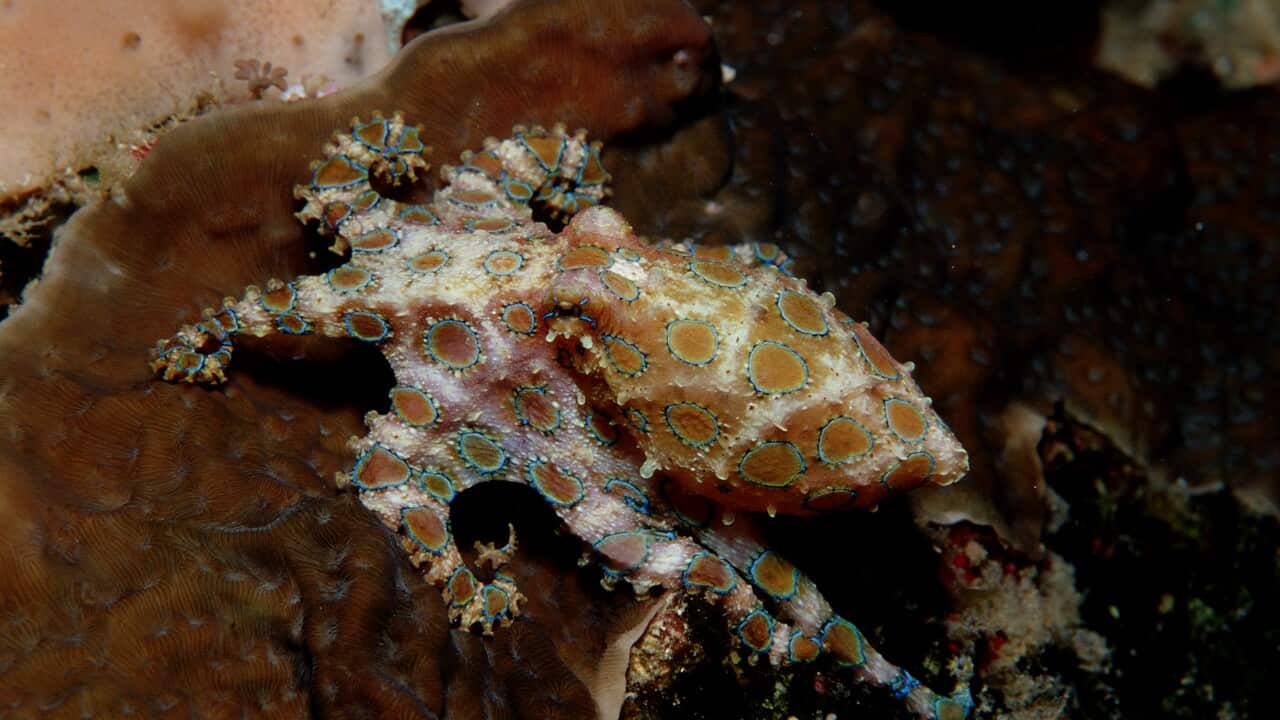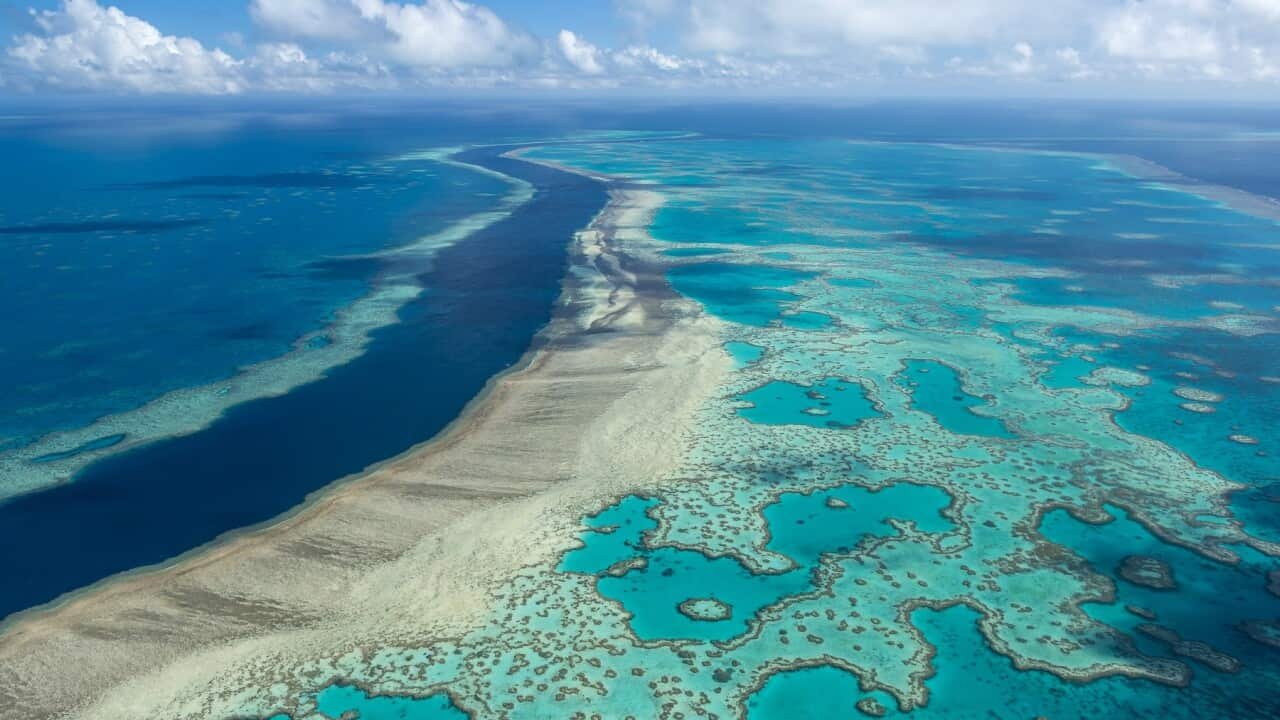TRANSCRIPT:
It's only about the size of a fingernail, but the Irukandji can cause a huge amount of suffering.
It's a pain marine researcher Professor Jamie Seymour knows all too well, having been stung by an Irukandji 11 times early in his career.
“There's a time lapse, usually around about 20 to 30 minutes. And then you go from going Yeah, I feel all right to nausea, vomiting, intense, racking pain throughout your body. And this feeling of impending doom that comes over the top of it, like something's gonna go seriously wrong. And the pain sort of ramps up and you get it under control, and it just goes up another level. And then you get that under control and think it can't get much worse. And then it goes up yet another level.”
These tiny, translucent jellyfish, with their softly shimmering tentacles, are responsible for about 150 to 200 stings in Australia each year, most in northern Queensland.
Most victims experience agonising pain and mild psychotic symptoms known as Irukandji Syndrome for several hours then recover.
But about 20 per cent end up in intensive care with heart problems, and for some the pain is so intense, they'll be induced or fall into a coma.
Two deaths have been confirmed in Australia but experts say the real figure is probably higher.
They're carried on the currents of tropical waters, which wash them towards Australia's northern shores every summer, along with the notoriously deadly box jellyfish, which has killed about 80 people since records began.
But Associate Professor Jamie Seymour from James Cook University says these patterns may be changing in correlation with warmer ocean waters caused by climate change.
“There seems to be more and more people being stung around the Fraser Island area. And historically, when you look at the numbers of stings, we've seen a progressive increase in their southern distribution over the last 15 or 20 years, but the data is really fuzzy on it, it's been hard to get a good handle on it. The thing that we do know is the length of the season for these guys has increased dramatically. So, off the Cairns area back in the early 1960s, the length of the season was maybe a month, a month and a half. And now the season starts sort of early November. And we still have animals here through to, sort of, April, May.”
Jellyfish research scientist Dr Lee-ann Gershwin from the University of Tasmania says there have long been Irukandji stings in southern waters, and the question of jellyfish migration is more complicated.
“We've been getting Irukandji stings at Fraser Island since at least the 1950s. In fact, we've also had Irukandji stings, south of Fraser Island for more than 100 years. We have an Irukandji sting in Moreton Bay in 1893. We had dozens of Irukandji stings in Botany Bay, in New South Wales, in 1905, many others as well.”
However, both scientists agree on the need for more action to better manage the risk of stings.
Currently, warning signs alert beach goers to to the dangers of stingers and urge swimmers to wear full body suits during the summer months.
And Far North Queensland beaches are netted, a move which has drastically reduced the number of box jellyfish stings since the 1980s.
But Dr Gershwin is calling for the return of a CSIRO early warning system for Irukandji based on weather systems, that was cut several years ago.
Professor Jamie Seymour suggests the development of an app to alert swimmers via QR code of stinger dangers and how to avoid and treat them.
“We need to make more people aware, and not in a sensational way, but more people are aware of what venomous animals were around and how you treat them. It always It surprises me, there's 200 odd people get stung by bite Irukandji, and it probably cost us $10 to $15 million in Queensland for medical help. But we have nothing like, for example, a crocodile Response Team.”
A spokesperson for the Queensland Department of Environment, Science & Innovation told SBS, that they issue Irukandji warnings for Fraser Island, also known as K'Gari, but that the management of marine stingers was outside their remit.
They directed us to Surf Live Saving Queensland who did not respond to our query.
Tourism Queensland, the Queensland Tourism Industry Council and the Great Barrier Reef Marine Authority were also unavailable.
Dr Lee-Ann Gershwin says governments and tourism need to take the problem more seriously.
“People go to the beach to have a good fun safe time, they just want to enjoy themselves. They're not experts in dangerous jellyfish. They don't know what to look for. They may not even know that Irukandji occur at the beach where they are swimming. They deserve better than just, ‘you'll be right mate’.”
She says the number of box jellyfish in Queensland was NOT reduced by Tropical Cyclone Jasper and heavy storms this year, indicating numbers could have been far higher.
And she wants to see investigation of an unusually huge bloom of sea nettle jellyfish around Kangaroo Island off South Australia, and the presence of bluebottles inside Tasmania's Storm Bay for the first time.
Then there's the Blue-ringed Octopus, which is found all around Australia.
Its venom contains a neurotoxin that some researchers say is 1000 more potent than cyanide, but due to their shy nature, stings and deaths in Australia are very rare.
Perth father Jason Tolley and his children came uncomfortably close this month when a Blue-ringed Octopus crawled out of a shell his son Benaiah had collected while snorkelling at Point Peron south of Perth.
Mr Tolley described the moment it crawled out of the shell near his daughter Ella-Rose's head.
“The shell that he came out of like it doesn't even look like it's hollow because it looks like it's just like a solid little shell. And it just slimed his way out of it. She was sunbathing when she looked and there were tentacles by her hair.”
Coogee Beach's Ladies Baths in Sydney were also visited by a Blue-ringed Octopus on New Year's Day.
Ladies Swimming Association President Shirley Teenan says it's a reminder to respect the ocean.
“It had been found in the middle of the steps. It was quite a prominent position for women walking into the pool. Someone could have stepped on it quite easily, so I'm very glad that somebody did spot it. We all love swimming so yeah, get in the ocean, but just be aware and respectful.”
As for the best treatment for marine stings, the scientific community has differing opinions about that too.
The Australian Resuscitation Council recommends using vinegar in the tropics, where deadly stingers are usually found, and rinsing with sea water or hot water for less dangerous stings outside of the tropics.
Most importantly, notify lifeguards, and seek medical help as soon as possible.













